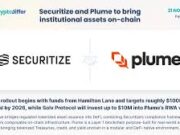If you follow crypto news as closely as I do, then you already know that Binance never makes small moves. Whenever the world’s largest cryptocurrency exchange by trading volume updates its platform, the ripple effects can be felt across the entire industry. This time is no different. On September 30, 2025, Binance announced that it will be removing several leveraged margin pairs, including crowd favorites like HMSTR/FDUSD and MEME/FDUSD.
At first glance, this may look like just another housekeeping effort, but when you dig deeper, it becomes clear that this is part of Binance’s ongoing push toward improving liquidity, compliance, and user protection. For traders who thrive on volatility, this change hits particularly hard. Let’s walk through exactly what’s happening, why it matters, and how you can adapt without losing your edge.
What Exactly Is Happening With Binance’s Margin Pairs?
To start, Binance is not eliminating Hamster Kombat’s HMSTR token or the viral MEME coin entirely. Instead, the platform is delisting their leveraged margin trading options. That means if you’ve been borrowing to long or short these pairs, you’ll soon lose that ability.
Here’s the official timeline:
- October 1, 2025 (14:00 UTC): Binance suspends isolated margin borrowing for HMSTR/FDUSD, MEME/FDUSD, SAGA/BTC, and ILV/BTC, among others.
- October 2, 2025 (14:00 UTC): All open positions will be automatically liquidated, and pending orders canceled.
In other words, if you’re holding a leveraged position in one of these pairs, Binance is giving you a 24-hour window to close it manually before the system does it for you (Binance Support, 2025).
This phased approach is not new. Binance has taken similar steps before, such as in November 2024, when it removed margin pairs like C98/BTC and IDEX/BTC with the same structured liquidation process (ChainCatcher, 2024).
Why Is Binance Pulling the Plug on HMSTR and MEME Margin Pairs?
Now, you might be asking: Why these pairs and why now? The answer boils down to one word—liquidity.
In margin trading, low liquidity creates dangerous scenarios. A single large order can swing prices dramatically, causing slippage and leaving traders with heavy losses. According to Binance, both HMSTR/FDUSD and MEME/FDUSD have seen consistently low trading volumes in recent months, making them unsuitable for leveraged trading (Coingape, 2024).
To put this into perspective:
- HMSTR/FDUSD has been hovering at around $5–10 million in 24-hour volume, far below safer, higher-volume pairs like BTC/USDT.
- MEME/FDUSD has suffered similar declines, with liquidity pools drying up as speculative hype cooled.
Additionally, Binance has long emphasized its commitment to maintaining a “high-quality trading environment”, and trimming underperforming pairs is part of that promise (Binance Blog).
A Quick Look Back: HMSTR and MEME’s Rise and Fall
Understanding this move requires remembering how these tokens came to prominence.
- HMSTR Token (Hamster Kombat):
Launched on Binance Launchpool in September 2024, HMSTR quickly became a hit, attracting billions in Total Value Locked (TVL). Built on the TON blockchain and fueled by its viral Telegram mini-app, HMSTR had its golden moment before settling into meme-coin territory (Traders Union, 2024). - MEME Coin:
MEME, on the other hand, was the darling of 2025’s degen traders, boosted by social media hype and celebrity mentions. However, as the mid-year bull rally fizzled, its volumes fell, and its margin future looked bleak.
Together, these tokens represent the cultural side of crypto—fun, speculative, and fast-moving. Yet Binance’s decision shows that culture isn’t enough without liquidity.
What This Means for Traders
If you currently hold leveraged positions in HMSTR or MEME, the immediate action plan is straightforward:
- Audit Your Margin Portfolio: Log in, review all HMSTR/FDUSD and MEME/FDUSD positions, and calculate your unrealized profits or losses.
- Exit Gracefully: Consider closing positions manually before October 2 to avoid forced liquidations at potentially worse prices.
- Diversify Your Strategy: Shift toward more liquid pairs like BTC/USDT or explore other platforms such as OKX or Bybit, which may still support these tokens on leverage.
- Use Spot Alternatives: Both HMSTR and MEME remain available in spot markets, meaning you can still trade them without borrowing.
Traders who manage risk properly—using tools like stop-losses and diversified exposure—can navigate these changes without significant setbacks.
The Bigger Picture: Compliance and Market Stability
Binance’s timing is also strategic. Beyond liquidity, regulatory pressure is shaping how exchanges operate.
- In the U.S., the SEC has begun easing its stance post-election, but monitoring low-liquidity pairs for manipulation remains a priority (Reuters, 2025).
- In Europe, the implementation of MiCA (Markets in Crypto-Assets regulation) in 2025 is pushing exchanges to tighten risk controls (European Commission, 2025).
By delisting weak pairs, Binance reduces exposure to compliance risks while reinforcing its dominance as a “safer” trading venue.
Ripple Effects Across the Crypto Market
Binance controls more than 55% of global spot trading volume (Kaiko Research, 2025), so its decisions always reverberate across the industry. Smaller exchanges may:
- Follow Binance’s lead, delisting similar pairs to avoid risk.
- Seize the opportunity, capturing displaced liquidity from traders unwilling to leave their HMSTR or MEME positions.
Meanwhile, on social platforms like X (formerly Twitter) and Weibo, debate is raging. Some call Binance’s move “centralized censorship,” while others argue it’s a necessary step toward professionalizing the crypto markets.
What’s Next for HMSTR, MEME, and Binance Users?
Looking forward, the fate of HMSTR and MEME depends on whether their communities can boost utility and demand. For example:
- HMSTR could deepen integrations with TON’s gaming ecosystem, creating new use cases.
- MEME might launch DeFi staking programs to regain attention.
For Binance users, the key takeaway is this: Expect more pruning. The exchange has hinted at AI-driven liquidity monitoring, which could make future delistings even faster. As a trader, your edge will come from staying agile, informed, and prepared.
Final Thoughts
Binance’s leveraged margin shake-up in October 2025 is a reminder that crypto isn’t just about speculation—it’s about survival. Tokens with strong liquidity and utility thrive; those without get sidelined. While losing leveraged access to HMSTR and MEME might sting, it also pushes traders toward safer, more sustainable strategies.
So, before October 2 hits, take a hard look at your positions, close out wisely, and prepare for the next chapter in crypto’s ongoing evolution.
Sources:
- Binance Official Announcement on Margin Delistings (2025)
- Coingape Report on HMSTR Delisting Impacts (2024)
- ChainCatcher on Prior Leverage Removals (2024)
- Traders Union on HMSTR Launchpool History (2024)
- Kaiko Research: Exchange Market Share (2025)
- European Commission – MiCA Regulation (2025)
- Reuters – SEC Post-Election Crypto Regulation (2025)



























